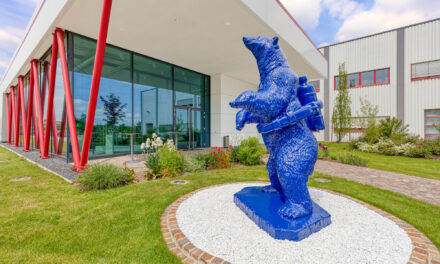SME manufacturing output fell at a considerably slower pace in the three months to October, following July’s record decline, according to the latest quarterly CBI SME Trends Survey.
The survey of 285 SME manufacturers reported that total new orders stabilised, following a survey-record pace of decline last quarter. Domestic orders were broadly unchanged, and export orders fell at a more moderate pace.
But while the decline in employment also slowed from the last quarter, the cut in headcount among SME manufacturers remained significant.
Business sentiment was roughly unchanged in the quarter to October, following a slight recovery in July. Export sentiment fell at a similar pace to the previous quarter.
Looking ahead to the next quarter, SME manufacturers expect output to grow at a solid pace. Total new orders are anticipated to pick up slightly, reflecting a slight rise in domestic orders and export orders falling at a more modest pace. Encouragingly, employment is also expected to rise modestly.
While investment intentions for the year ahead remain weak, they have nonetheless improved on the past two quarters. The share of firms citing uncertainty about demand, cash-flow related concerns, and labour shortages as factors to limit capital expenditure also declined considerably from last quarter’s record highs.
Alpesh Paleja, CBI Lead Economist, said: “The thaw in activity seems to be melting for SME manufacturers, and it’s encouraging that output and employment is set to grow in the quarter ahead. But a second national lockdown will inevitably mean that prospects are now looking bleaker.
“However, the step up in government support is welcome. In particular, extending the Job Retention Scheme further will give companies the certainty and stability they need to help safeguard jobs. If signs of additional strain are growing among SME manufacturers and their supply chains, the government may need to think about more tailored support in the coming weeks.”
Key findings:
- Output volumes in the three months to October (-15 per cent) fell at a slower pace than in July (-53 per cent, record quick decline). Firms expect output to grow at a solid pace in the next three months (+14 per cent).
- Total new orders in the three months to October were flat (-1 per cent) following a survey record decline last quarter (-56 per cent). Domestic orders were broadly unchanged (+3 per cent from a record sharp decline of -64 per cent in July) and export orders fell at a slower pace than in July (-19 per cent from a record fall of -55 per cent).
- Looking ahead, manufacturers expect total new orders to grow marginally in the next three months (+4 per cent). Domestic orders are anticipated to pick up slightly (+5 per cent), while export orders are expected to fall at a slower pace (-8 per cent).
- Numbers employed in the quarter to October fell strongly (-30 per cent), but at a slower pace than in July (-43 per cent). Firms expect headcounts to pick up somewhat next quarter (+9 per cent).
- Business sentiment in the quarter to October (+1 per cent) was flat following modest growth in July (+9 per cent). Export sentiment fell at a similar pace to last quarter (-24 per cent, from -26 per cent).
- Manufacturers expect investment in buildings (-29 per cent) and plant & machinery (-11 per cent) to decline in the next year, but to a much lesser extent than last quarter. Capital expenditure in product & process innovation is expected to pick up slightly (+6 per cent), while spending on training & retraining (-3 per cent) is anticipated to be broadly unchanged.
- The share of firms citing uncertainty about demand (55 per cent from 75 per cent in July), inadequate net returns (26 per cent from 47 per cent), internal finance shortages (14 per cent from 38 per cent in July), inability to raise external finance (9 per cent from 29 per cent in July), and labour shortages (16 per cent from 33 per cent in July) as factors to limit capital expenditure over the next year declined noticeably from last quarter’s survey record highs.



